|
za 2004 god.
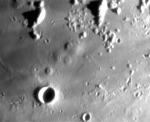 Six Little Volcanoes
Six Little Volcanoes
26.03.2004 | Lunnoe foto dnya
Volcanism on the Moon is completely dominated by mare basalts, mostly in the form of vast sheets of lava flows that create the maria. Sitting on top of mare lavas in some places are 5-20 km wide blisters or domes, some with summit pits.
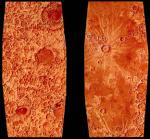 Russian Gores
Russian Gores
25.03.2004 | Lunnoe foto dnya
The American side of the 1960s Race to the Moon is well documented at numerous web sites. Unfortunately, on the web the story of the Soviet lunar effort is less complete. Recently however, more...
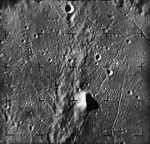 RA9
RA9
24.03.2004 | Lunnoe foto dnya
Thirty-nine years ago today the Ranger 9 spacecraft crashed into the north-east floor of Alphonsus crater, having successfully taken 5,814 pictures during the previous 19 minutes. Rangers 7 and 8 had provided high resolution views of possible landing sites on mare surfaces, freeing Ranger 9 to explore a geologically more interesting site.
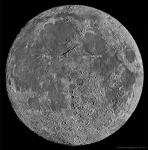 Magnificent Moon!
Magnificent Moon!
23.03.2004 | Lunnoe foto dnya
Its impossible to take a single image of the Moon that shows topography across the entire Earth-facing side. Pablo Lonnie Pacheco of Monterrey, Mexico has responded to this impossibility with the most spectacular piece of image processing I have ever seen.
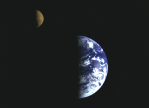 Double Planet
Double Planet
22.03.2004 | Lunnoe foto dnya
The origin of the Moon was long a mystery. Most scientists now accept the giant impact model but one of the earlier ideas was that the Earth and Moon formed at the same time from the same region of the solar nebula.
 Fold a Moon
Fold a Moon
21.03.2004 | Lunnoe foto dnya
Is it a globe if it has 20 sides? Not really, but its close enough to be a useful 3-D rendition of the Moon. Go to Calvin Hamilton's web site to download a larger version of this image, and then with, scissors, glue or two-side tape, fold yourself a Moon.
 An Unusual View of a Lunar Limb
An Unusual View of a Lunar Limb
20.03.2004 | Lunnoe foto dnya
As the Galileo spacecraft swung by the Earth-Moon system to get a gravitational boost for its long trip to Jupiter, it imaged the Moon. Most attention was focused on the Full Moon view of Mare Orientale, visible at top right.
 Selenology
Selenology
19.03.2004 | Lunnoe foto dnya
The Moon attracts more observers than any other celestial body. I just made that up, but it may be true. Certainly, the Moon has attracted organized efforts to coordinate observations since the 1860s, and the British Astronomical Association's Lunar Section was formed in 1891.
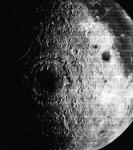 Bull's Eye!
Bull's Eye!
18.03.2004 | Lunnoe foto dnya
Our understanding of the Moon would have advanced much faster if the Orientale basin were not just over the western limb. If Orientale were more centered of the face of the Moon we see from Earth everyone from Galileo onward would have understood large circular impact basins.
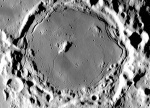 Awesome Pitatus
Awesome Pitatus
17.03.2004 | Lunnoe foto dnya
Pitatus is one of the under-appreciated gems of the Moon. With a diameter of 97 km it is about the same width as Plato (101 km), but has a much more interesting interior. Presumably Pitatus was a Copernicus style crater when formed, with magnificent concentric wall terraces and a large central peak.

